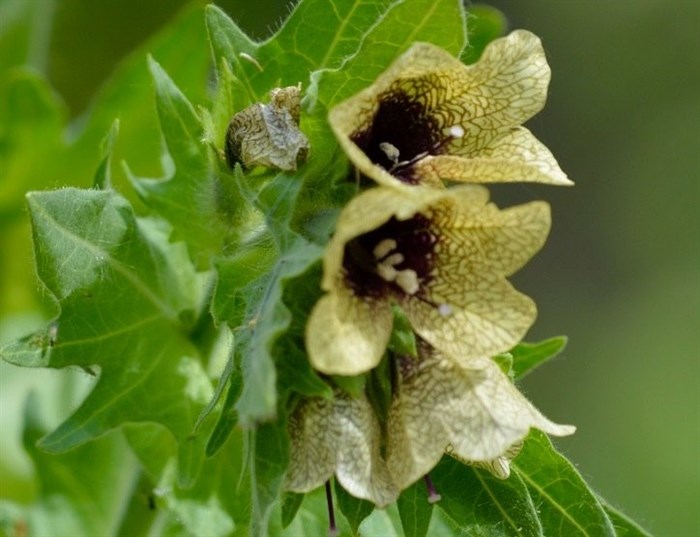
Black henbane was spotted by a Kelowna naturalist at UBCO in 2022.
Image Credit: SUBMITTED/ Ian Walker
July 20, 2024 - 4:30 PM
A foul-smelling toxic invasive plant is spreading in BC and not only is it poisonous to humans and animals, it crowds out natural forage for livestock and wildlife and shelters crop pests.
Black henbane is a sticky, woody invasive from the Mediterranean that was brought to North America for ornamental and medicinal uses. It is on the provincial prohibited list of plants that pose a significant threat to the environment, economy and human health.
There are confirmed sightings of it in the Okanagan, Similkameen, Cariboo, Thompson, Nicola and East Kootenay regions, and without preventative measures has a high risk of spreading as one single plant produces hundreds of thousands of seeds that remain viable for five years.
Last month, the East Kootenay Invasive Species Council issued an alert after black henbane was found in Kimberley for the first time with no other sightings in the region to date.
The invasive plant grows in disturbed sites, rangelands, croplands, roadsides and riparian areas. A member of the nightshade family, the plant stands one metre tall, has a thick stem and large leaves covered in fine, sticky hairs. The flowers are brownish yellow with dark purple veins and bloom from May to September.
The plants are poisonous when ingested by humans and livestock, but livestock tends to avoid it if other forage is available.
READ MORE: iN VIDEO: Famous Spotted Lake in Osoyoos viewed from above
Symptoms of poisoning include impaired vision, convulsions, coma and death from heart or respiratory failure.
There ways to prevent henbane and its spread, according to Invasive Species Online Okanagan. Property owners can do regular checks for the invasive plant and remove it before they seed. Planting competitive natural grasses on bare or disturbed spots will reduce the amount of nutrients available to henbane. Contaminated soils should not be removed, and equipment and vehicles should not be parked in infested areas.
READ MORE: How to save urban trees in Okanagan, Kamloops from destructive, invasive beetle
Henbane can be removed by hand using protective gloves and clothing, put in a bag and disposed of at a landfill. Chemical control is also an option.
The dried henbane leaves have medicinal alkaloids that can be purified for use in pharmaceuticals, according to Britannica. The plants are used in herbal and folk medicine, and the leaves are used in illicit preparations of smoking mixtures.
Some sources report smaller-than-lethal doses of black henbane can cause hallucinations, increase alcohol intoxication and serve as an aphrodisiac.
Black henbane is a provincially prohibited species and sightings should be reported via the BC Report Invasives phone app or online.
To contact a reporter for this story, email Shannon Ainslie or call 250-819-6089 or email the editor. You can also submit photos, videos or news tips to the newsroom and be entered to win a monthly prize draw.
We welcome your comments and opinions on our stories but play nice. We won't censor or delete comments unless they contain off-topic statements or links, unnecessary vulgarity, false facts, spam or obviously fake profiles. If you have any concerns about what you see in comments, email the editor in the link above. SUBSCRIBE to our awesome newsletter here.
News from © iNFOnews, 2024